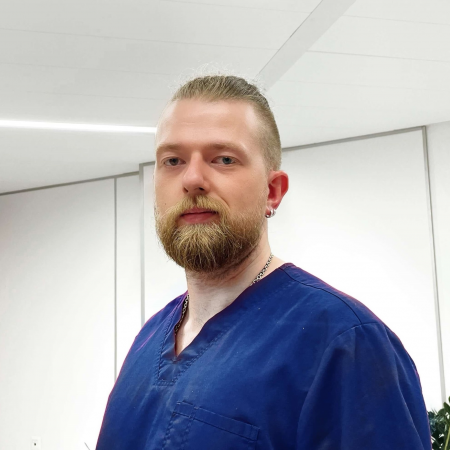Surgical thrombectomy
Surgical thrombectomy is the removal of a blood clot from a vascular bed (it can be an artery or a vein). In a healthy person, the blood moves freely through the vascular system, providing nutrients to organs and tissues. If the body fails, causing the blood to change its properties and become thicker, there is a risk of blood clots. This, in turn, leads to circulatory disorders, partial or complete blockage of blood flow (total blockage occurs after the walls of the vessel are completely closed, and the blood stops moving through the arteries and veins).
Ways to restore blood flow
Drugs help maintain blood circulation in the initial stages of the pathology when the walls of blood vessels remain elastic and the diameter of the internal lumen is sufficient to push the blood in the right direction. In case of complete blockage of blood flow, surgery is indicated, during which the surgeon cuts the vessel and removes a blood clot (thrombus). In cases of threat of recurrence, a dilating device (stent) is installed in the vessel, which prevents narrowing of the lumen of the artery or performs replacement of the affected area of the vessel.
In which cases the operation is performed
Indications for thrombectomy are the presence of a blood clot in an arterial or venous vessel. This operation is indicated in cases where the formation cannot be eliminated with conservative treatment, and the pathology is fraught with serious health complications.
The main symptoms that indicate the presence of a blood clot:
- swelling in the extremities;
- tingling, feeling cold or numb in some parts of the arms or legs;
- muscle pain;
- swollen veins, which are visible under the skin;
- necrosis (death of certain areas of tissue in the area of blood supply).
Your doctor will decide if a thrombectomy is needed based on the diagnosis. If there is a possibility of removing the clot with medication - you will be prescribed appropriate treatment (injections, drips, pills), aimed at thinning the blood and restoring its rheological properties. The treatment plan will be developed by a vascular surgeon.
Risks and possible complications
To one degree or another, every surgery is associated with risks. The following risks may occur during thrombectomy:
- excessive life-threatening bleeding;
- penetration of infection;
- damage to the vessel at the site of thrombus formation;
- complications caused by anesthesia (individual reaction of the body);
- pulmonary embolism.
After the operation, there is a possibility of secondary thrombus formation. The risks for each patient are determined separately by the general state of health, immune status, coagulation parameters, the location of the thrombus. All possible complications are discussed with your doctor before surgery.
Preparation for surgical thrombectomy
Before the operation, you will be asked to sign a form confirming your consent to the procedure. The document states that you are familiar with the risks of the operation and its purpose, as well as an explanation of all topics related to surgery. Read the form carefully so that there are no further misunderstandings.
Discuss with your doctor a plan to prepare for surgery. Tell your specialist about all the medications you are taking, including over-the-counter and dietary supplements. Some drugs affect the process of hematopoiesis (eg, aspirin, paracetamol, ibuprofen) and blood clotting.
Before surgery, tell your doctor about the problems with anesthesia (if any), the susceptibility to allergic reactions, pregnancy, and other important factors that could potentially complicate the operation.
Diagnosis
Before operations, conduct tests prescribed by a doctor, in particular:
- Ultrasound to measure blood flow in the extremities and determine the location of the thrombus;
- angiography (in cases of thrombus in the artery) to obtain an image of the vascular system;
- magnetic resonance imaging (MRI), if additional information is needed;
- computed tomography (CT) to obtain additional information about the location and nature of the blood clot;
- blood test to determine general health.
The course of the operation
- In the first stage, a special catheter will be installed in your arm or neck area, which will receive anesthetics and sedatives.
- The doctor will make an incision in the area above the clot, opening the blood vessel and removing the clot.
- With the help of a special balloon attached to the catheter, the shape of the vessel is restored and its diameter is increased.
- Then the doctor will restore the integrity of the vessel and normal blood flow.
Restoration
After the operation, you will spend several hours in the postoperative ward. The team of doctors will continuously monitor such indicators as heart rate and rhythm of your breathing. The average period of stay in the hospital is 4 days. You will soon be allowed to get to your feet and spend some time on the move to restore blood circulation as quickly as possible.
We recommend that you quit smoking to reduce the likelihood of recurrence in the future. Your doctor will monitor your health after discharge.
The Dobrobut clinic employs vascular surgeons with extensive practical experience who are constantly in touch with patients during the recovery period.
Download our mobile app to be able to make an appointment with doctors without calling, pay for treatment, ask questions, view medical history, and use a number of convenient services online.




